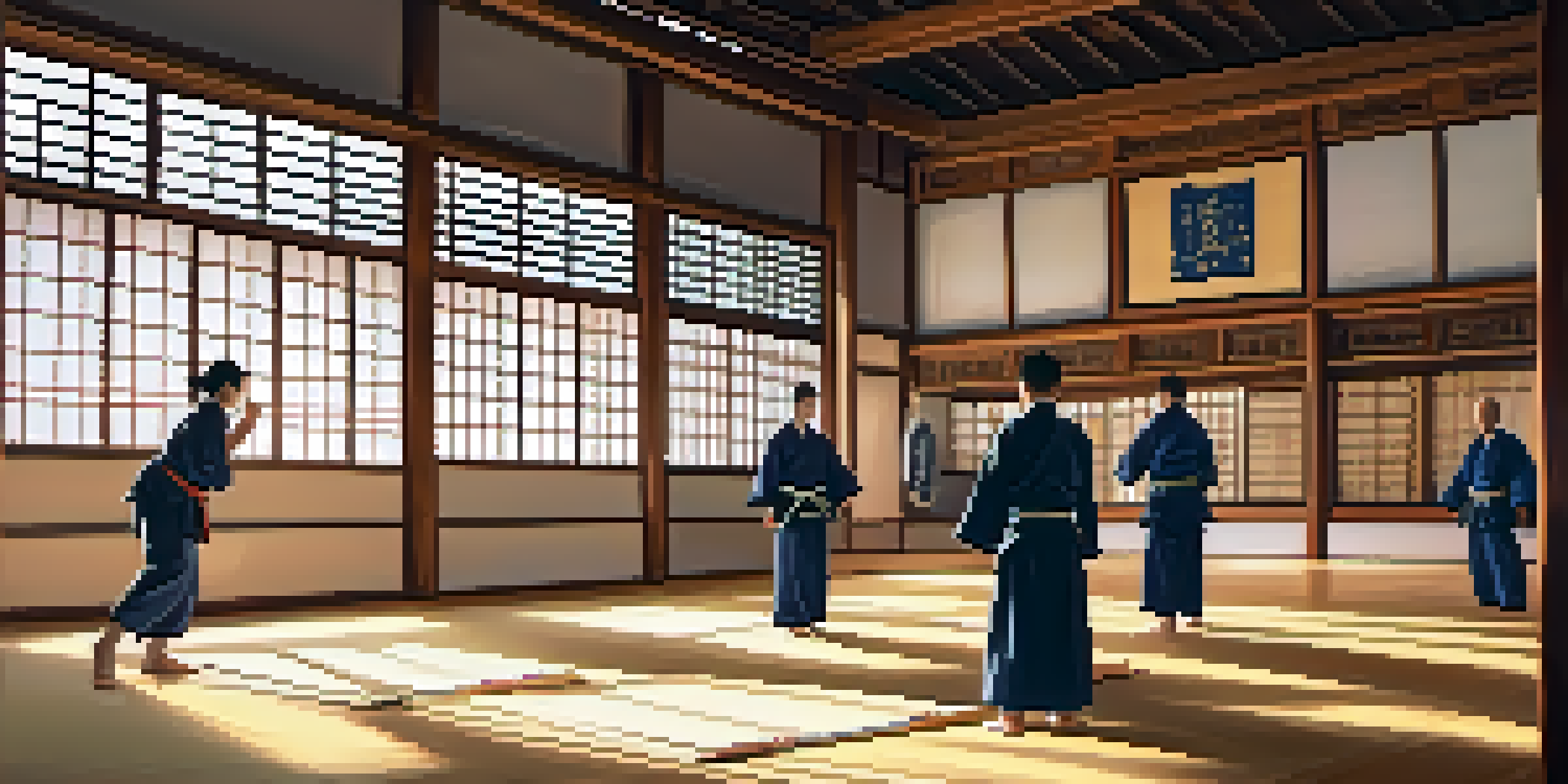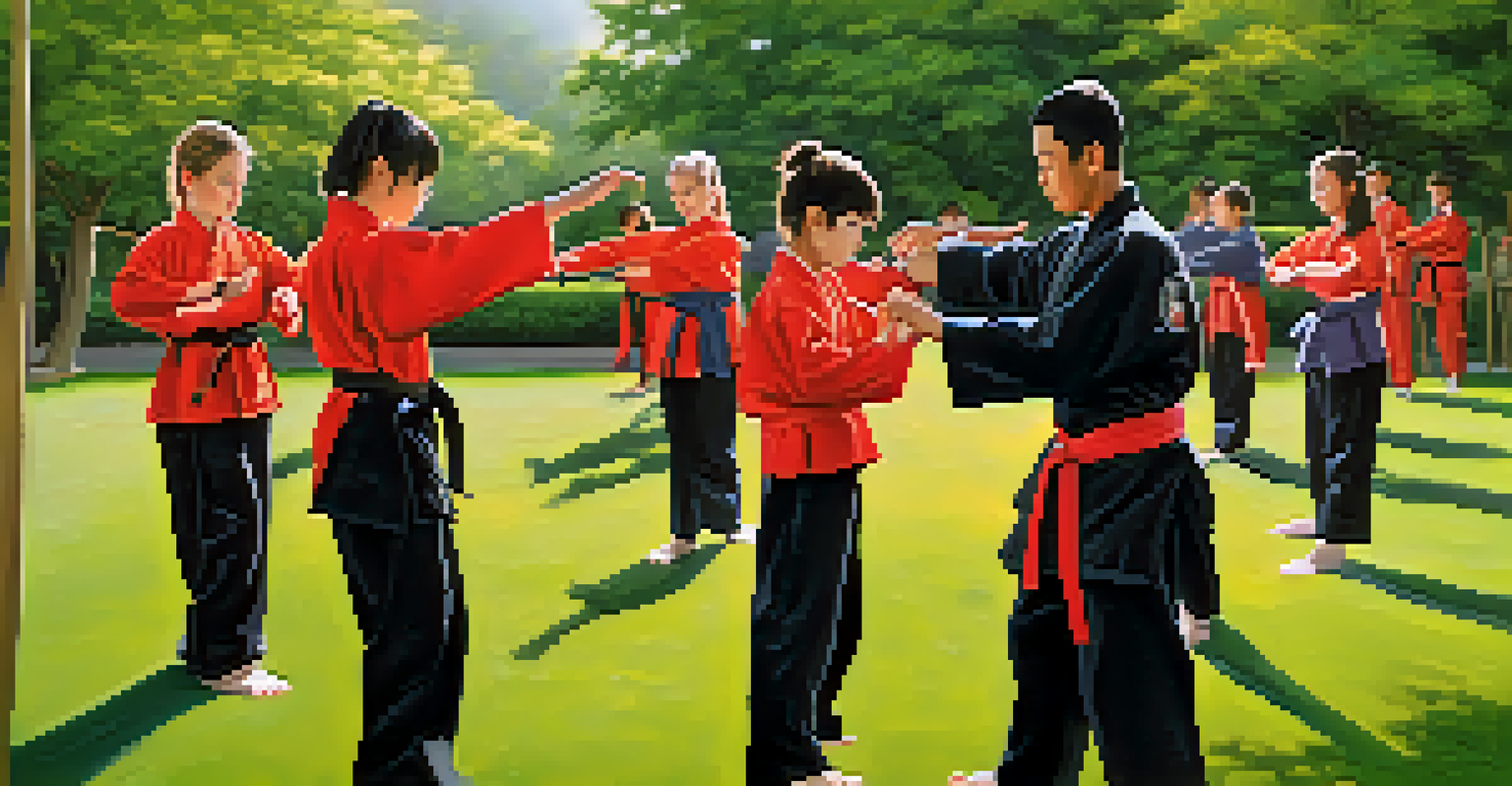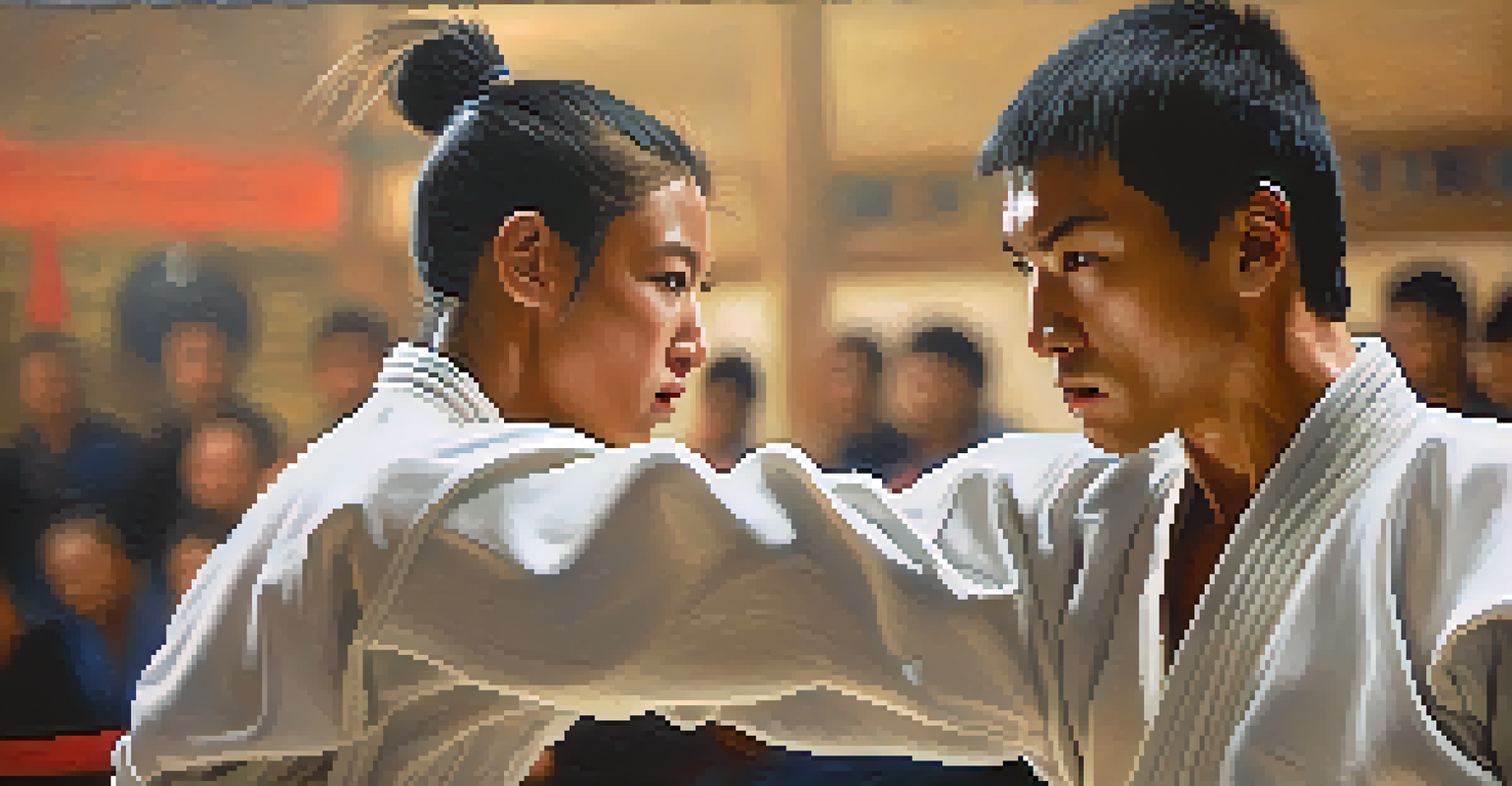How Martial Arts Develops Personal Safety Awareness Skills

Understanding Personal Safety Awareness in Martial Arts
Personal safety awareness is the ability to recognize and respond to potential threats before they escalate. In martial arts, this awareness is cultivated through training that emphasizes observation and intuition. Practitioners learn to read their environment and assess situations critically, which can be invaluable in everyday life.
The best fighter is never angry.
For instance, during sparring sessions, students must stay alert to their opponent's movements and intentions. This heightened sense of awareness translates outside the dojo, enabling individuals to identify potential dangers in their surroundings. Overall, martial arts fosters a proactive mindset that prioritizes safety.
This awareness is not just about physical threats; it also includes understanding social dynamics and recognizing uncomfortable situations. By developing these skills, martial artists become more adept at navigating various environments with confidence and caution.
The Role of Situational Awareness in Self-Defense
Situational awareness is a core component of self-defense training in martial arts. It involves being aware of your surroundings, understanding the behavior of others, and anticipating potential issues. This skill is honed through exercises that challenge students to focus on multiple elements of their environment simultaneously.

For example, martial artists often practice drills that simulate real-life scenarios, requiring them to stay vigilant and react appropriately. By consistently engaging in these drills, practitioners develop a natural instinct for assessing risks and making informed decisions. This proactive approach is crucial for effective self-defense.
Personal Safety Through Awareness
Martial arts training enhances personal safety by cultivating situational awareness and a proactive mindset.
Moreover, situational awareness encourages individuals to trust their instincts. When something feels off, martial artists learn to take those feelings seriously. This trust in one's intuition can often prevent dangerous situations from occurring in the first place.
Building Confidence Through Martial Arts Training
Confidence is a vital aspect of personal safety awareness, and martial arts training fosters this quality in numerous ways. As practitioners learn techniques and improve their physical fitness, they naturally become more self-assured. This newfound confidence can significantly impact how they perceive and respond to potentially dangerous situations.
It is not the strongest of the species that survive, nor the most intelligent, but the one most responsive to change.
For instance, when trained individuals encounter a threatening scenario, their martial arts background allows them to remain calm and collected. They are more likely to assess their options rationally rather than succumbing to fear. This level-headedness can be the difference between a successful resolution and a harmful outcome.
Additionally, the supportive environment of martial arts classes encourages personal growth and resilience. Practitioners learn to face challenges head-on, which not only builds physical skills but also strengthens mental fortitude. This combination of confidence and composure is essential for maintaining personal safety.
Enhancing Decision-Making Skills in High-Pressure Situations
Martial arts training often involves high-pressure scenarios that require quick decision-making. Practitioners are constantly challenged to think on their feet, adapting their strategies based on evolving circumstances. This skill is invaluable in real-life situations where split-second decisions can have significant consequences.
For example, during a sparring match, a martial artist must decide whether to defend, counter, or retreat based on their opponent's actions. This experience translates to everyday life, where individuals may need to make quick judgments about their safety in unexpected situations. The ability to assess and act swiftly is crucial for personal safety.
Confidence Boosts Response Ability
Practitioners gain confidence through training, allowing them to respond calmly and rationally in threatening situations.
Moreover, the discipline of martial arts teaches the importance of evaluating risks before acting. Practitioners learn to weigh their options carefully, considering potential outcomes. This analytical approach enhances their overall decision-making abilities, empowering them to navigate various situations with greater awareness.
Developing Respect and Empathy Through Training
Martial arts is not just about physical skills; it also instills values such as respect and empathy. These qualities are essential for personal safety awareness, as they foster a deeper understanding of others and their behaviors. Practitioners learn to appreciate the perspectives of their peers during training, which can translate to better interpersonal relationships.
For instance, while training with a partner, martial artists must communicate effectively and respect each other's boundaries. This interaction builds a sense of empathy, helping them recognize when someone else may be feeling threatened or uncomfortable. These insights can be crucial in identifying potential dangers in social settings.
Additionally, the emphasis on respect in martial arts promotes a culture of non-violence. Practitioners learn that physical confrontation should be a last resort, encouraging them to seek peaceful resolutions when possible. This mindset not only enhances personal safety but also contributes to a more harmonious community.
Instilling Discipline and Focus for Safety Awareness
Martial arts training requires discipline and focus, which are critical components of personal safety awareness. Practitioners must dedicate time and effort to mastering techniques, which cultivates a strong work ethic and the ability to concentrate on tasks at hand. These qualities can significantly enhance their overall awareness.
For example, during training sessions, martial artists must remain attentive to their instructors and surroundings, honing their focus. This attention to detail helps them notice subtle changes in their environment, empowering them to react swiftly to potential threats. Over time, this heightened focus becomes second nature.
Community Strengthens Safety Mindset
The sense of community in martial arts promotes shared responsibility for safety, encouraging individuals to support one another.
Moreover, the discipline learned in martial arts encourages practitioners to maintain a proactive approach to safety. They are less likely to become complacent and more inclined to stay vigilant in various situations. This constant state of awareness is essential for recognizing and addressing potential dangers before they escalate.
Creating a Sense of Community and Shared Responsibility
Martial arts training often fosters a strong sense of community among practitioners, which can enhance personal safety awareness. Being part of a supportive group encourages individuals to look out for one another and share valuable insights about safety. This collective mindset can be incredibly empowering when faced with potential threats.
For example, in a martial arts class, students often partner up to practice techniques, creating an environment where they can learn from each other's experiences. This collaboration enhances their ability to recognize and address safety concerns together. A sense of camaraderie helps alleviate feelings of isolation in challenging situations.

Additionally, this shared responsibility extends beyond the dojo. Practitioners often carry the values learned in martial arts into their daily lives, promoting safety awareness within their communities. By supporting one another, they create a culture of vigilance that benefits everyone.